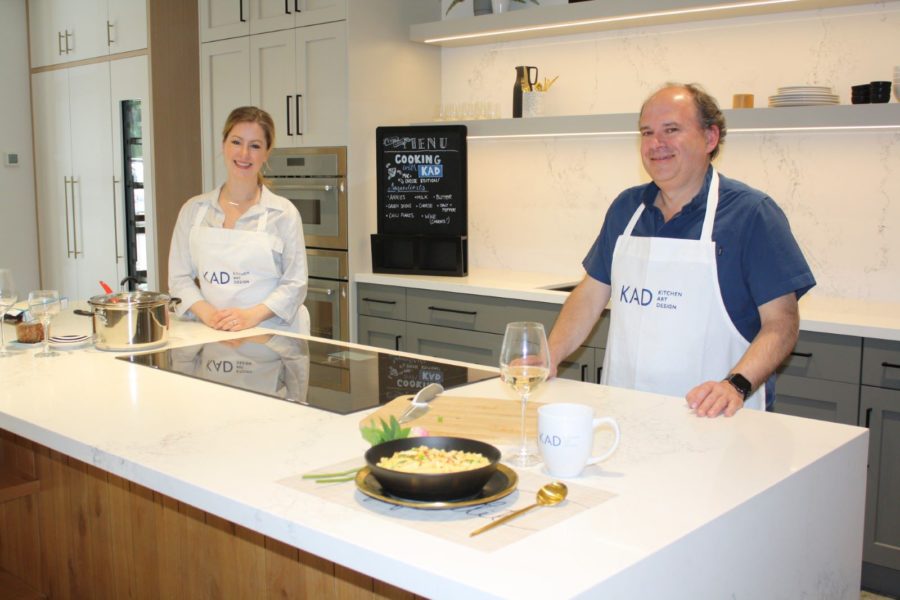There are few other places in the home, or in our collective memory of what home should mean, than the kitchen. The kitchen is one of the most powerful gathering places the human species has ever known- it sustains us, connects us, brings us together, and is where we celebrate and where we share.
Whether your space needs a minor facelift with a few cosmetic tweaks, or a complete, from-the-ground-up, scorched-earth style makeover, working with a reputable and professional kitchen designer can save you a load of time, energy, irritation, and cash. The expertise and experience they possess is critical to crafting the kitchen of your dreams.
Listening
The first step in any designer/client discussion begins with a simple conversation. Your kitchen designer will first ask about the style of job they’re being asked to collaborate on — a renovation, or a new build. Then, they’ll seek to understand whom they’re designing for — maybe a contractor, another designer, or a homeowner seeking to build their perfect kitchen.
“We start with a needs analysis,” says Jeff Friesen, founder of Kitchen Art Design. “We do the needs analysis either in person or over the phone, and then we come into the clients home to do a site measure and talk about all the specific details of their project.”
This stage is semi-dependent on the homeowner knowing full-well prior to the meeting what they’re trying to create; the listening stage is all about finding creative and practical ways to inject the new kitchen with as much personality, and personal touch as possible. Without a few aesthetic ideas laid out first, a good kitchen designer will ask about your tastes, what the space is typically used for (entertaining, cooking, etc.) and how you envision yourself using the kitchen upon completion.
Have a firm understanding and expectation for your budget, as well. Knowing what you want to spend and having your designer know full-well what you can and can’t stomach spending will help down the road when it comes to their interpretation of the types of finishes and appliances you want. Making your proposed budget known in the first conversation will avoid any potential divide between expectations and reality.
Inspiration
Kitchen designers get their ideas from a variety of informed places, as well as their own creativity and adaptability. Inspiration can come from history, culture, environmental, social, ethnic, and geographical influences, spanning through decades of design trends. Kitchen designers are great to have in your corner for the wealth of knowledge they bring to the table when deliberating the style of your new kitchen. As up-to-date and forward thinking as they can be — there’s a constant factor that always resurfaces. The basics.
The basics of kitchen design provide a solid base on which to build a stunning interior design. Designers worth their salt will always maximize efficiency and functionality before getting into the nitty-gritty of design trends and modern touches. If a space cannot function properly, the polish and aesthetic appeal of the space will be inevitably diminished.
You
There’s also an aspect of psychology that plays a part in the ability of a good kitchen designer. Inspiration for your dream kitchen will come from you. Your kitchen designer will take your ideas and the spirit of your descriptions and attempt to create a space that compliments your lifestyle, wishes, budget, and taste.

Go online and browse as many kitchens as you can. Flip through design magazines. Ask your friends and family about features in their own kitchens. Get creative and explore the advantages and disadvantages to different materials and design trends that pique your interest — tailor your taste around what looks good to you, and what types of features and spaces will benefit your lifestyle.
“We carry through as much of the clients vision as we can without compromising functionality and aesthetic,” says Friesen. “Our job as designers is to take all of the clients requests and dreams, and then guide them to the correct choices with our professional knowledge.”
The Brass Tacks
Sticking to one concrete vision of what your kitchen could be isn’t the best way to achieve your dream space. Working with a kitchen designer will ensure you’re exposed to, and debriefed on how to reach the pinnacle of functionality and style. Your kitchen designer takes your initial thoughts from your first meeting and inputs them into a database of concepts, ideas, and thoughts customized by your kitchen wish-list.
“Sometimes clients will have ideas that either can’t be done in the space that they have, or that would limit the functionality or overall appearance,” concedes Jeff.
This means a good kitchen designer will care enough about you and your kitchen dreams to intervene and suggest suitable, stylish alternatives that may help the aesthetics of the kitchen, and the flow of the space; a good designer won’t idly stand by and allow you to potentially make a design mistake from your personal wants. There’s a balance to working with a kitchen designer, and it manifests with them having the confidence to help you build the best space possible.

“Our number one job is to make a space that’s beautiful and functional for our clients, but if we think that we can tweak an idea to help the space flow better, or find that another idea could compromise the functionality of the space, we’ll explain that to the customer; clients are usually very receptive to collaborating with our design team. We always do our best to stay as true to the client’s vision as possible, but offering options is something our clientele seem to appreciate.”
“We carry through as much of the clients vision as we can without compromising functionality and aesthetic,” says Friesen. “Our job as designers is to take all of the clients requests and dreams, and then guide them to the correct choices with our professional knowledge.”
Layout & Architecture
Now that you’ve had a measure completed, you’ve met and discussed your plans with your kitchen designer, and you’ve laid out your budget, found your contractors, prioritized your wants and needs, style ideas, and inspiration – it’s finally go time. This is where an experienced kitchen designer really comes into their own.

This is the stage where clients get their first sense of how the space will function – and so it represents a pivotal step in how a kitchen designer plans your dream kitchen.
“On average, this process takes around 6-8 weeks,” says Friesen, “we do one initial set of drawings based on what type of finishing’s they like, and then the client is able to tell us what they agree with, what they don’t, and what they would like to change. The second round of edited drawings is based on client changes and tweaks from the initial design presentation.”
The success rate is usually high for seasoned designers who take the time to listen to the client’s requests, ideas, and tastes. Plus, the excitement during the initial reveal is usually palpable. “We usually nail the design by the second round because we do the best we can to squeeze every ounce of feedback out of them during the site visit and the first presentation,” smiles Friesen.
It’s no wonder that when given the opportunity to roll up our sleeves and embark on a considerable home renovation, the majority of people almost immediately choose to overhaul the kitchen. The kitchen renovation is ever-popular because we instinctively know how important it is to the energy and character of the home.
The best part about working with a professional kitchen designer, is that they have your character and energy in mind as they guide you through your dream kitchen renovation process.